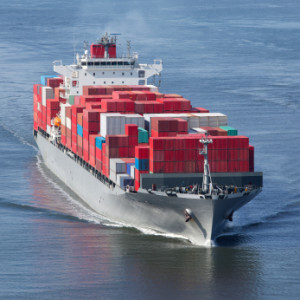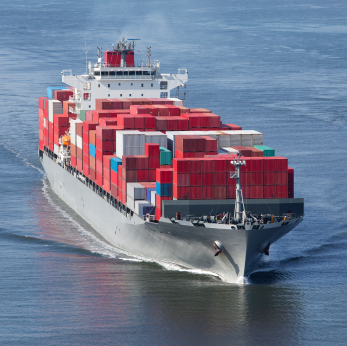Oakland, CA – A new international protocol, requiring vessels to reduce sulfur oxide (SOx) emissions by burning low-sulfur fuel within 200 miles of U.S. and Canadian coasts, has led transpacific container lines to factor the added costs of the more expensive fuel into their existing bunker fuel charges.
 Effective October 1, 2012, member carriers in the Transpacific Stabilization Agreement (TSA) will apply a low-sulfur fuel component that tracks weekly price differentials between low-sulfur and standard marine bunker fuels; calculates an average per container fuel cost differential, based on sailing days and relative fuel consumption at the higher price within the 200-mile zone; and then applies that to the existing TSA bunker charge as it is adjusted.
Effective October 1, 2012, member carriers in the Transpacific Stabilization Agreement (TSA) will apply a low-sulfur fuel component that tracks weekly price differentials between low-sulfur and standard marine bunker fuels; calculates an average per container fuel cost differential, based on sailing days and relative fuel consumption at the higher price within the 200-mile zone; and then applies that to the existing TSA bunker charge as it is adjusted.
The new component will be applied concurrent with the next scheduled bunker charge adjustment on October 1, in the amount of US$17 per 40-foot container (FEU) to the U.S. West Coast; and $21 per FEU to the U.S. East and Gulf Coasts.
The North American Emissions Control Area (ECA) was established effective August 1, 2012 under the International Maritime Organization’s MARPOL Annex VI protocol, to which the U.S. and Canada are signatories. The result has been a significant increase in consumption of more costly low-sulfur fuel by vessels entering and departing U.S. and Canadian ports, particularly for container vessels operating on scheduled weekly services.
According to price data reporting service Platt’s, price differentials between standard bunker and premium low-sulfur fuel at the four key loading locations used to calculate the TSA component – Los Angeles/Oakland, Seattle, Charleston and New York – ranged from $87 to $260 per metric ton as of mid-August. TSA lines report spending just under 2.7 sailing days per voyage within the North American ECA to the U.S. West Coast, and just over 4.4 days to the East and Gulf Coasts.
“As our member carriers have adjusted to comply with MARPOL Annex VI, the relative added cost per FEU aboard ship as reflected in the charge is not huge, but the overall cost impact per sailing across the entire trade is significant,” said TSA executive administrator Brian M. Conrad. “Lines with scheduled services are also concerned about the spike in demand for low-sulfur fuel created by the ECA, and effects in the near and midterm on supply and price.”
Price differentials tracked by TSA have risen in recent months, particularly on the West Coast as the ECA has been implemented in August. An internal TSA study of price sensitivity reveals that for every $20 per metric ton change in low-sulfur fuel prices, component levels rise or fall $2-3 to the West Coast, and $5-6 to the East and Gulf Coasts.
Conrad explained that the low-sulfur component is based on 1) average weekly price differentials between standard bunker and low-sulfur fuel as reported by Platt’s; 2) a weighted average of TSA carriers’ relative daily consumption of the different fuels; and 3) average sailing days within the 200-mile ECA limit per vessel to the various coasts.
The component is applied by backing out from the current bunker charge the number of sailing days within the ECA per voyage, at the fuel consumption rates and prices for standard bunker fuel, and then adding back in the number of days in the zone and costs based on average low-sulfur consumption and prices. All other calculation variables used in the existing bunker charge formula remain the same.
Conrad said TSA will post weekly low-sulfur prices on its website in the coming month, along with instructions that will enable customers to calculate the likely component levels for the coming adjustment, as they now do for the bunker charge.
The new North American ECA encompasses the West Coast from Alaska to Mexico plus Hawaii, and the East and Gulf Coasts from Mexico up to northern Canada. Similar ECAs are already in place under the protocol for the Baltic Sea and North Sea areas. A fourth U.S. Caribbean ECA, extended to Puerto Rico and the U.S. Virgin Islands, takes effect in 2014. The total estimated cost of the ECA by 2020 is $3.2 billion, achieving an 85% reduction in vessel SOx and particulate matter emissions. In 2016 the ECA will phase in further requirements for reducing nitrogen oxide (NOx) emissions.
TSA is a research and discussion forum of major container shipping lines serving the trade from Asia to ports and inland points in the U.S.
TSA members include APL Ltd., K Line, China Shipping Container Lines, Maersk Line, CMA-CGM, Mediterranean Shipping Co., COSCO Container Lines, Ltd, NYK Line, Evergreen Line, OOCL, Hanjin Shipping Co, Yangming Marine Transport Corp, Hapag-Lloyd, Zim Integrated Shipping Services and Hyundai Merchant Marine Co., Ltd.





